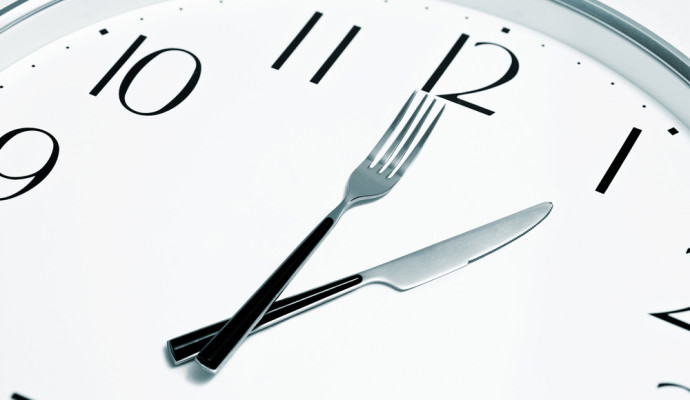How to avoid a weight loss plateau
By Raquel Sbrana, Registered Professional Level 2 (Cert IV Fitness/Group Exercise/Boxing/Kickboxing)
If you want to continually make progress, we have to keep your body guessing. Our bodies are designed to adapt to training and diet regimes, so in the journey of weight loss, plateaus can happen to everyone. Here’s some easy ways to get your body ready to lose.
1. Clean up your diet
Keep in mind that a diet does not mean restricting your calories to dangerously low levels, it comes down to the composition of the foods we eat as well as the time we eat them. Choosing whole foods that are in their raw, natural state is the key to any successful eating plan. To break through a plateau, you may just need to clean up your diet a little. Most people do well when it comes to balancing out their protein, carbohydrates and fats. However, some people are carbohydrate sensitive, therefore a drop in carbohydrates with a corresponding increase in protein can often help break through a plateau. By no means would I recommend a dramatic decrease in carbohydrates! An example of how to do this correctly would be instead of having 2 slices of toast for breakfast, have one, with a poached egg and a grilled tomato or mushroom.
2. Increase the frequency of your meals
Increasing your meal frequency will immediately rev up your metabolism. Every time you consume calories, you give your metabolism a boost. We should aim for have 5-6 small meals each day. These frequent meals will also control your cravings and prevent binges. Make sure you are eating the correct foods – see previous weeks notes for ideas, or better yet, visit Health Mates Dietitian, Rebecca.
3. Cycle your calories
When you put your body through extreme calorie deficits, your body will automatically adjust and begin to conserve energy (also known as calories). Prolonged calorie deficits cause your body’s metabolism to plummet and go into starvation mode. In starvation mode, your body tries to hold onto every calorie possible in order to conserve energy. Fortunately, using a method called calorie cycling, you can trick your body into keeping a high metabolic rate while you’re dieting for fat loss. Calorie cycling allows you to eat one to three days of higher calories and higher carbs followed by three days of lower calories and lower carbs. On these low calorie/low carb days, you lose body fat rapidly. However, before your body can adapt to these changes and go into starvation mode, you raise the calories back up so that you don’t hit a weight loss plateau. By increasing your calories, you also increase your metabolism and prepare your body to start burning fat again.
4. Increase the duration of your cardio
With weight loss being our primary goal, cardio should be the foundation of our training. Ideally each session should be a minimum of 30 minutes. However, if you find yourself hitting a plateau, you could try increasing this amount incrementally by five to ten minutes at a time. It is best not to go beyond 60 minutes in a single workout. Book in to see a Health Mates trainer for more information.
5. Increase the frequency of your cardio
If the duration of your cardio sessions is already 45-60 minutes and you are still struggling to get the results you are after, it may be time to increase your frequency. If possible you should always aim for at least three days per week of aerobic exercise. If you are finding you have hit a plateau and you would like to increase your rate of fat loss, try to add one additional workout per week until you reach five per week. These sessions do not necessarily need to be done in the gym. I understand with work and family commitments getting to the gym is not always possible. Taking the dog for a run around the block, or even walking around your child’s netball or football field while they train is all cardio!
You can also use a training technique known as double cardio. Performing cardio twice a day can be used for short periods of time to break through a plateau and get extremely lean. These two-a-day workouts will provide you with an incredible boost to the metabolism and enormous calorie burn. However, keep in mind that this is not a long-term plan. It is only used to bust through a plateau or reach a new peak in your fitness level.
6. Increase Intensity
 To reach a new level of fitness, you may just need to push yourself a little harder. Increase the intensity of your workout and you will immediately find yourself burning more calories in the same amount of time. If your heart rate is 120 push it up to 130. If you’ve been doing 30 minutes of walking on the treadmill, why not start some jogging. If you’ve been doing 30 minutes on the elliptical, why not try some high intensity interval training to crank up your workout. High intensity cardio allows you to push yourself for short bursts and then rest for a short period of time. The intervals can last from 30 seconds to two minutes. This type of interval workout allows you to burn an enormous amount of calories in a relatively short period of time. Interval training also produces a greater post-exercise effect, burning calories even after the workout is finished. The possibilities are endless.
To reach a new level of fitness, you may just need to push yourself a little harder. Increase the intensity of your workout and you will immediately find yourself burning more calories in the same amount of time. If your heart rate is 120 push it up to 130. If you’ve been doing 30 minutes of walking on the treadmill, why not start some jogging. If you’ve been doing 30 minutes on the elliptical, why not try some high intensity interval training to crank up your workout. High intensity cardio allows you to push yourself for short bursts and then rest for a short period of time. The intervals can last from 30 seconds to two minutes. This type of interval workout allows you to burn an enormous amount of calories in a relatively short period of time. Interval training also produces a greater post-exercise effect, burning calories even after the workout is finished. The possibilities are endless.
7. More is Not Always Better
Keep in mind that there comes a point when you could be over-training. If you’ve been doing high intensity cardio 6 days per week and weight training for 4 days per week, you could easily go into burnout mode. Remember, muscles grow while they are at rest. You should be taking at least one day off each week. When you find yourself completely flushed, you may want to take off for a complete week. This rest period will allow you to come back twice as strong and make even further gains. Always keep the body guessing. By adding variety to your workout routines, you will begin to strengthen many more muscles and are much less likely to develop weak points.












